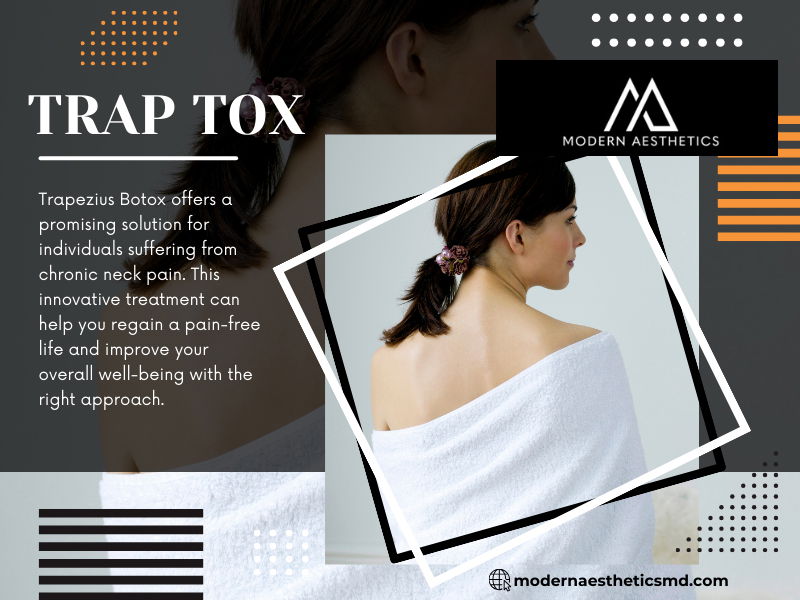Trap Tox
Trap Tox Insights? Unveiling The Perfect Candidate For Trapezius Botox!
Trap Tox, a specialized application of Botox for the trapezius muscles, has been gaining popularity for aesthetic and therapeutic reasons.
This treatment involves injecting Botox into the trapezius muscles to achieve various benefits, from relieving muscle tension to improving the appearance of the neck and shoulders.
Below, we explore the critical aspects of Trap Tox, its benefits, and considerations for those considering this treatment.
Aesthetic Goals
One of the primary considerations for Trap Tox's candidacy is the individual's aesthetic goals. Ideal candidates desire a more elongated neck and smoother shoulder contours.
Overdeveloped trapezius muscles can create a bulky appearance that some find unattractive.
Trap Tox can relax these muscles and help achieve a more refined and elegant silhouette.
Candidates seeking these specific cosmetic improvements are likely to benefit from the treatment.
Chronic Muscle Tension
Beyond aesthetics, Trap Tox offers significant relief for individuals suffering from chronic muscle tension.
The trapezius muscles are prone to tension due to stress, poor posture, or repetitive activities like desk work.
Candidates experiencing persistent discomfort, pain, or tension headaches may find relief through Trap Tox.
The treatment reduces muscle activity, alleviates pain, and improves mobility.
Those with chronic trapezius muscle tension are good candidates for Trap Tox's therapeutic benefits.
Realistic Expectations
Anyone considering Trap Tox must have realistic expectations. Ideal candidates understand that while the treatment can provide noticeable improvements, results vary based on individual factors.
Botox does not provide permanent changes; the effects typically last three to six months.
Candidates should be prepared for regular follow-up treatments to maintain their desired results.
A thorough consultation with a qualified professional can help set realistic expectations and ensure satisfaction with the outcomes.
Overall Health
The individual's overall health is another critical factor in determining candidacy for Trap Tox.
Candidates should be in good health and free from conditions that could complicate the treatment or recovery.
Certain neurological conditions, allergies to Botox ingredients, or active infections in the treatment area may disqualify someone from being a suitable candidate.
A comprehensive medical history and examination by a healthcare professional are necessary to identify potential risks.
Consultation With A ProfessionalA thorough consultation with a qualified healthcare provider is essential to determine if Trap Tox is appropriate.
During this consultation, the provider will assess the individual's muscle structure, discuss their goals, and evaluate their medical history.
This personalized approach ensures the treatment plan aligns with the candidate's needs and health status.
The Traptox Near Me consultation also allows candidates to ask questions and understand the procedure, risks, and expected outcomes
Maintenance And Follow-UpUnderstanding the commitment to maintenance and follow-up treatments is vital for Trap Tox candidates.
Since Botox's effects are temporary, ongoing treatments are necessary to sustain the results.
Ideal candidates can commit to regular visits and are prepared for the associated costs.
Consistent follow-up ensures that Trap Tox's benefits are long-lasting and align with the individual's aesthetic and therapeutic goals.
Conclusion
Determining the ideal candidate for Trap Tox involves a comprehensive assessment of aesthetic goals, chronic muscle tension, realistic expectations, overall health, and psychological readiness.
Individuals can ensure that Trap Tox is the right choice for their needs by undergoing a detailed consultation with a qualified professional.

